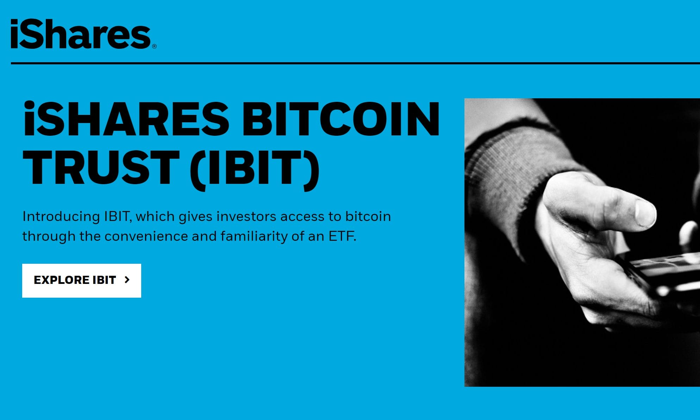In the rapidly evolving landscape of blockchain technology, enhancing the blockchain user experience is essential for driving mainstream adoption. Current blockchain ecosystems often present a significant learning curve, making it challenging for everyday users to navigate the intricacies of decentralized applications, cross-chain interoperability, and wallet management. Innovations such as solver-based bridging and chain abstraction aim to streamline interactions, creating a Web3 user experience that rivals the simplicity of Web2 applications. Furthermore, employing tools like zero-knowledge proofs can ensure user security while minimizing the friction typically associated with blockchain transactions. As the industry focuses on these advancements, the potential for a seamless blockchain user experience becomes a reality, propelling wider adoption across the globe.
The evolution of blockchain technology calls for a reimagining of digital interactions, particularly through enhancing the blockchain user experience. Alternative strategies such as streamlined access to Web3 functionalities, inter-chain fluidity, and frictionless asset transfer are critical in attracting a broader demographic of users. Concepts like intent-driven bridging solutions and abstraction across chains are pivotal in redefining how users engage with blockchain platforms. Additionally, the implementation of techniques designed for privacy and verification, such as zero-knowledge proofs, can further alleviate users’ concerns surrounding security and complexity. Ultimately, making blockchain as intuitive as traditional web experiences could unlock its full potential and invite mass participation.
The Importance of Blockchain User Experience in Web3
A seamless blockchain user experience is crucial to achieving mass adoption and reaching the envisioned billion users in the Web3 landscape. Unlike traditional Web2 platforms, where users can complete transactions with minimal mental friction, Web3 interfaces often involve complex protocols that can overwhelm those unfamiliar with blockchain technology. Users grapple with the intricacies of managing multiple wallets, navigating various chains, and executing complex transactions—all while being susceptible to security risks and potential financial losses due to human error. These hurdles prevent everyday users from engaging comfortably with decentralized applications, which, in turn, stifles broader adoption of blockchain technology.
To bridge the gap between today’s user experience and the expectations set by Web2, there needs to be an urgent overhaul in how blockchain platforms present their functionality. Simplifying the user interface and reducing the complexity of transactional processes are essential steps toward achieving an intuitive experience. By doing so, blockchain intermediaries can focus on strategic education, empowering users to engage without the intimidation that often accompanies the technology. Ultimately, a superior user experience will establish a foundation of trust and usability that can entice mainstream users to embrace the mesmerizing potential that blockchain offers.
Overcoming Interoperability Challenges in Web3
Interoperability is often touted as one of the most significant advancements in blockchain technology, yet it remains a barrier to user experience in Web3 platforms. Fragmentation of services leaves users juggling multiple wallets and platforms, making it challenging to interact fluidly across different blockchain networks. Current cross-chain practices, while more advanced than earlier iterations, still require users to manage multiple approvals and navigate various protocols, which is far from the streamlined processes achieved in traditional finance. By adopting frameworks that prioritize seamless interactions, the ecosystem can greatly enhance user engagement and empower individuals to transition effortlessly between blockchain applications.
To address these challenges, solver-based bridging protocols may offer promising solutions that prioritize user intent over technical prowess. By simplifying the user’s journey and automating complex processes, these protocols pave the way for an experience reminiscent of Web2 platforms, where users no longer need to worry about the processes behind their transactions. Enhancing blockchain interoperability through such innovations will not only reduce friction but also instill confidence among users, thereby breaking down the barriers that currently hinder mass adoption.
Furthermore, improvements in blockchain interoperability contribute to the formation of a cohesive ecosystem where various services can work together seamlessly. Instead of being confined to specific silos, users can engage with a myriad of platforms that communicate efficiently across chains. Initiatives that support this level of integration not only encourage user exploration and interaction but also help foster a community-oriented atmosphere within the blockchain space. Thus, enhancing blockchain interoperability is instrumental in promoting broader engagement and creating a more inclusive Web3 landscape.
The Role of Solver-Based Bridging in Enhancing UX
Solver-based bridging protocols are an innovative approach to improving the blockchain user experience by enabling users to complete complex transactions without deep technical knowledge. By leveraging these protocols, users can simply state their intent—whether it’s swapping tokens or moving assets—leaving the intricate maneuvers of the backend to automated systems designed to handle such tasks. This shift eliminates many manual processes currently required, significantly reducing user friction and minimizing the potential for costly errors associated with traditional cross-chain transactions.
In practice, this means that users can execute their desired actions while experiencing minimal disruption or confusion. With solvable tasks being identified and executed automatically by these protocols, interactions become intuitive and user-friendly. This not only elevates the ease of use but also aligns with the expectations of a modern digital audience accustomed to the frictionless service models of Web2. By prioritizing user intent and automating complex computations, the Web3 ecosystem stands to bolster user confidence and encourage increased adoption across a diverse audience.
Making Blockchain Transactions Invisible with Chain Abstraction
A critical step toward achieving mass adoption in the blockchain space is the concept of chain abstraction, which aims to make blockchain interactions as straightforward as possible. By removing the technical jargon and cumbersome processes that currently plague user experience, chain abstraction seeks to transform complex blockchain operations into simple, user-friendly actions. This means that users can interact with decentralized applications (dApps) without needing to understand the underlying technicalities—effectively making the backend invisible to them.
For everyday users, such an approach could revolutionize their engagement with blockchain technologies. Imagine a world where users can execute transactions, engage in DeFi protocols, or partake in NFT marketplaces without ever needing to manage private keys or switch networks. By relying on intuitive designs and user interfaces that emphasize simplicity, blockchain platforms can cater to individuals who may feel intimidated by the complexity generally associated with Web3. Thus, chain abstraction represents a foundational shift that is vital for expanding the reach of blockchain applications and driving meaningful user engagement.
The Promise of Zero-Knowledge Proofs in Enhancing Privacy and User Trust
Zero-knowledge proofs (ZKPs) are emerging as a powerful tool in the blockchain space for enhancing both user security and trust. By allowing one party to prove possession of information without revealing the information itself, ZKPs ensure that sensitive data remains private while also facilitating seamless interactions across various blockchain networks. This technology not only increases security but also reduces the complexity that users face, as it streamlines the process of verification without burdening users with the need to understand the details of cryptographic protocols.
Integrating ZKPs into blockchain applications offers a dual advantage: enhancing user privacy while promoting a more fluid user experience. As these proofs shield users from sharing unnecessary data—thus mitigating risks of hacks and breaches—they provide comfort that the sensitive information is secure. This, combined with simplified workflows made possible through chain abstraction and solver-based bridging, could lead to higher adoption rates among non-technical users, allowing the broader audience to engage with blockchain without cumbersome processes or security concerns.
User-Centric Innovations: Key to Mainstream Adoption of Web3
For blockchain technology to reach its next level of adoption, user-centric innovations need to take center stage. As the industry has recognized the necessity of prioritizing user experience, various core concepts—such as solver-based bridging, chain abstraction, and zero-knowledge proofs—are now being developed with the user in mind. Successful realization of these technologies can lead to more intuitive interactions that closely resemble those users enjoy in Web2, fostering trust and confidence as they navigate new digital landscapes.
Ultimately, addressing user needs with evolving technology will not only improve the overall blockchain experience but also solidify its place in the everyday lives of individuals. As the Web3 ecosystem continues to enhance its offerings, the focus on creating a seamless, user-friendly experience must remain a key pillar in discussions surrounding blockchain advancements. By doing so, the aspiration to onboard a billion users can transform from a lofty goal into a tangible reality.
Future Directions for Enhancing User Experience in Web3
Looking ahead, it is clear that achieving a seamless blockchain user experience necessitates a concerted effort from industry stakeholders across the board. As new technologies emerge, the opportunity arises to not only refine existing frameworks but also to explore innovative solutions tailored specifically to enhancing user interaction. Initiatives focused on usability will play a crucial role in shaping the future of Web3 and determining its viability for mainstream audiences. Such efforts could lead to a comprehensive ecosystem where user experience is paramount, ultimately facilitating wider acceptance and engagement within the blockchain realm.
This vision relies on collaboration among developers, designers, and regulators to create systems that prioritize the user experience while maintaining robust security and privacy measures. It is not just about making technology more efficient but also about making it accessible and understandable. As the industry embarks on this journey, continuous feedback from users will be vital in shaping the shape of future innovations. By placing the user at the center of development efforts, Web3 stands to evolve into a vibrant and inclusive space that truly reflects the potential of decentralized technology.
Building Confidence Through Enhanced Security in Web3
As users increasingly engage with blockchain technology, their confidence in the security of these platforms becomes critically important for overall adoption. With significant financial losses due to cross-chain exploits making headlines, ensuring that users feel secure when transacting is imperative. The implementation of technologies like zero-knowledge proofs and enhanced security protocols can play a crucial role in restoring faith in blockchain interactions. By focusing on securing assets and safeguarding sensitive information, stakeholders can create a more reassuring atmosphere in which users feel compelled to explore the possibilities of Web3.
Beyond merely addressing existing vulnerabilities, building a culture of security awareness can further empower users. Education about the nature of risks associated with blockchain, coupled with robust security features, can allow users to navigate the space with greater awareness. As users gain confidence in the security of their transactions and data, they become more likely to embrace decentralized technologies and engage actively in the Web3 ecosystem, propelling collective growth and encouraging widespread use.
Frequently Asked Questions
What is blockchain user experience and why is it important for Web3 adoption?
Blockchain user experience (UX) refers to how users interact with blockchain technologies and applications. It is crucial for Web3 adoption because a poor user experience can deter users from engaging with decentralized applications (dApps). If blockchain platforms are overly complex, requiring users to manage multiple wallets or navigate convoluted procedures, it leads to frustration and limits mass adoption. Improving the blockchain UX to be more intuitive and seamless, similar to Web2 experiences, is necessary to attract a wider audience.
How does blockchain interoperability enhance user experience in Web3?
Blockchain interoperability enhances user experience in Web3 by allowing different blockchain networks to communicate with each other seamlessly. This means users can transfer assets or interact with various dApps without facing significant barriers, such as needing multiple wallets or manual transaction approvals. With better interoperability, users can enjoy a smoother experience while navigating between different chains, thus reducing friction and encouraging broader adoption of blockchain technology.
What are solver-based bridging protocols, and how do they improve the blockchain user experience?
Solver-based bridging protocols improve the blockchain user experience by automating the process of transferring assets across chains based on user intent. Instead of manually signing multiple transactions and choosing a bridge, users can simply define their desired outcome. The protocol takes care of the complexities behind the scenes, optimizing the transaction and enhancing security by reducing the potential for human error. This approach significantly minimizes the friction users face, making interactions within the Web3 ecosystem more efficient and intuitive.
What is chain abstraction, and how does it simplify blockchain interactions for users?
Chain abstraction simplifies blockchain interactions by hiding the complexities of the underlying technology from the user. This allows users to engage with dApps seamlessly, without needing to understand the intricate details of blockchain mechanics, such as network switching or token standards. By making interactions more straightforward, chain abstraction paves the way for a more inviting Web3 user experience, which is essential for attaining mass adoption.
How do zero-knowledge proofs (ZKPs) contribute to a better blockchain user experience in Web3?
Zero-knowledge proofs (ZKPs) contribute to a better blockchain user experience by allowing verification of information without exposing the data itself. This enhances privacy and security, reassuring users that their sensitive information remains protected while still enabling participation in blockchain transactions. By integrating ZKPs, the need for users to manage complex data-handling processes is reduced, fostering a more streamlined and user-friendly environment within Web3.
| Key Points | Details |
|---|---|
| Blockchain User Experience Challenges | Current blockchain experiences are complex, requiring users to manage multiple wallets and navigate intricate transaction processes. |
| Importance of Interoperability | Despite technological advancements, interoperability is plagued with usability issues that hinder mass adoption. |
| Wallet Fragmentation Issues | Users must maintain different wallets for various ecosystems, making asset transfer cumbersome. |
| Emergence of Solver-Based Bridging Protocols | These protocols simplify user interactions by eliminating the need for manual transaction approvals. |
| Goal of User Experience Overhaul | To increase blockchain adoption, the tech must become as user-friendly as established Web2 services. |
| Future Technologies: ZKPs and Chain Abstraction | Zero-knowledge proofs and chain abstraction can further enhance the user experience. |
Summary
Blockchain user experience is crucial for mass adoption of Web3 technology. To attract a billion users, the blockchain ecosystem must prioritize user-friendly solutions that mask the inherent complexities of the technology. By implementing frameworks like solver-based bridging protocols and leveraging zero-knowledge proofs, the industry can create a seamless experience similar to that of Web2. This transformation will enable everyday users, unfamiliar with blockchain intricacies, to engage effortlessly, ensuring that mainstream adoption is not only possible but inevitable.
The blockchain user experience is at a critical juncture, where technological advancements must align with user expectations to foster widespread adoption. As blockchain and Web3 technologies evolve, ensuring a seamless and intuitive interface is paramount for aspiring to reach a billion users. The complexity of navigating multiple wallets and chains has created a barrier that many casual users find daunting. Fortunately, innovative solutions like solver-based bridging and enhanced blockchain interoperability are poised to simplify interactions and make the Web3 user experience as familiar as traditional platforms. Additionally, incorporating advanced concepts such as chain abstraction and zero-knowledge proofs can drastically reduce friction, paving the way for a more engaging and accessible digital environment.
In exploring the landscape of decentralized technologies, the notion of blockchain user experience can also be framed as the holistic approach to Web3 engagement. This emerging field prioritizes user-centric design to address the hurdles faced in decentralized ecosystems. By implementing strategies focused on interoperability and seamless transitions across various blockchain networks, developers seek to create an inviting atmosphere for users unfamiliar with technical complexities. Moreover, concepts such as solver-based bridging and intuitive chain abstraction underpin this commitment to ease of use. Ultimately, enhancing the Web3 experience involves a concerted effort to shift from challenging operational paradigms to user-friendly environments where security and simplicity coexist.















